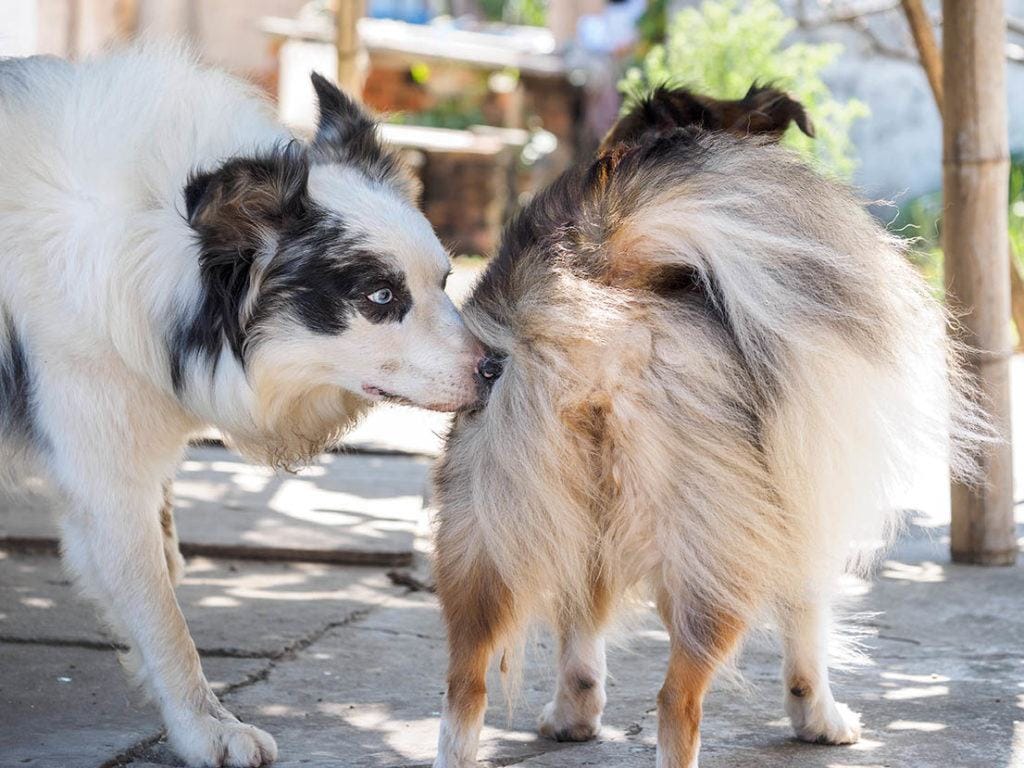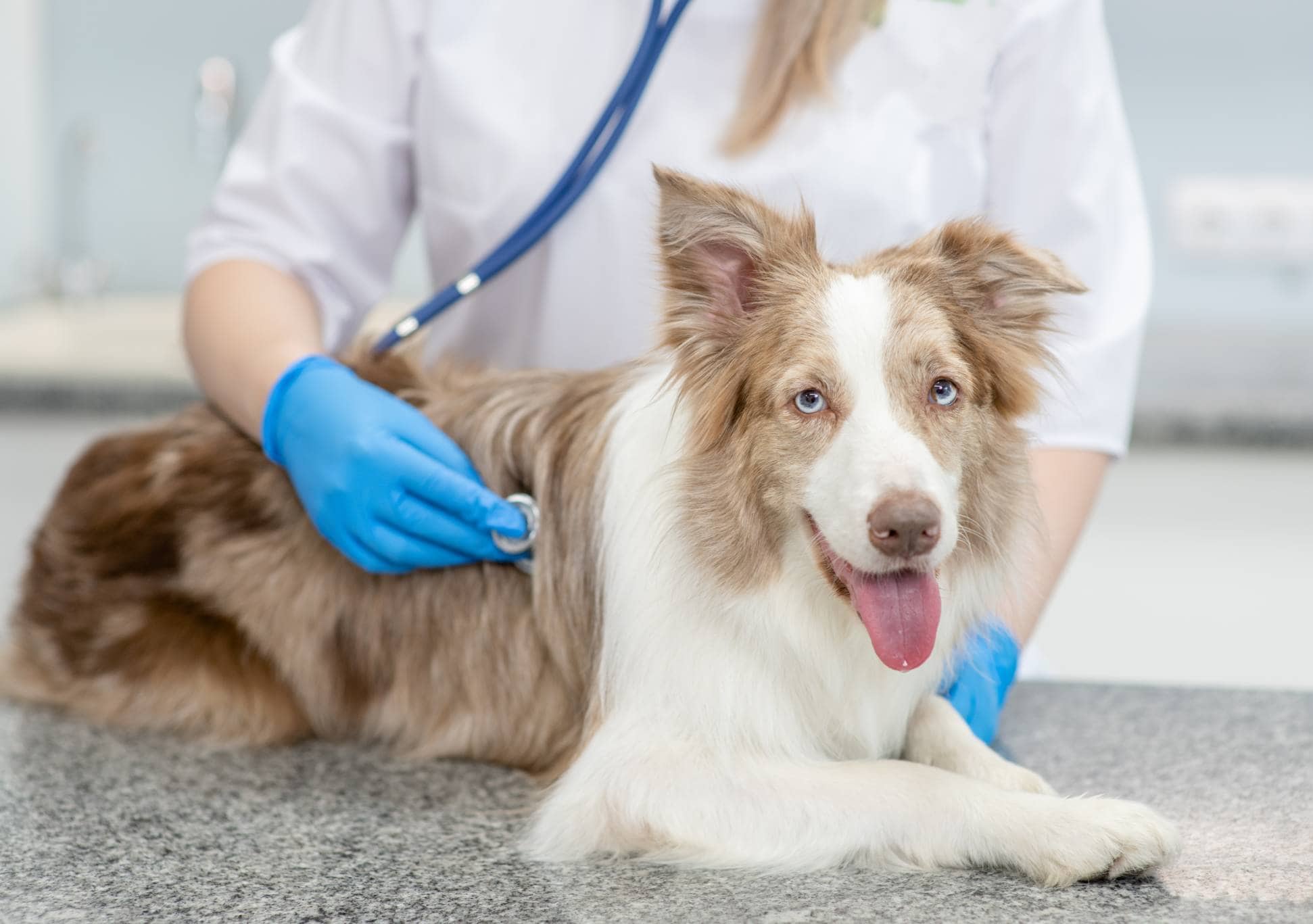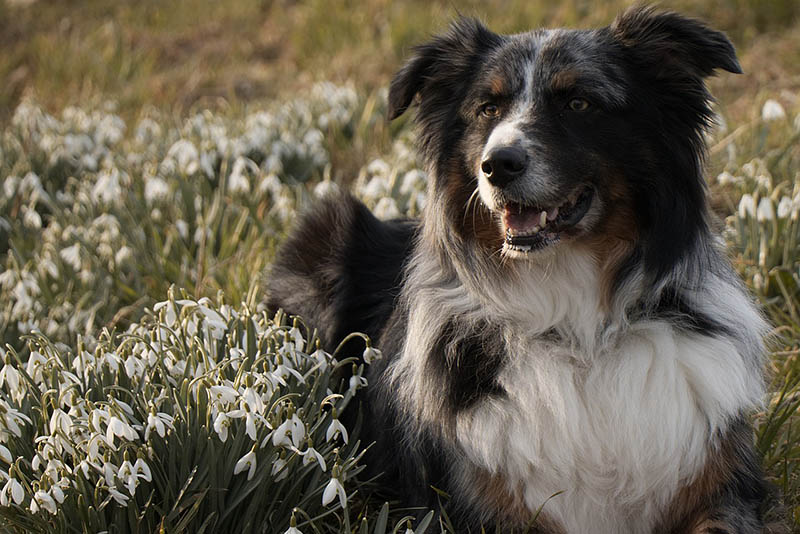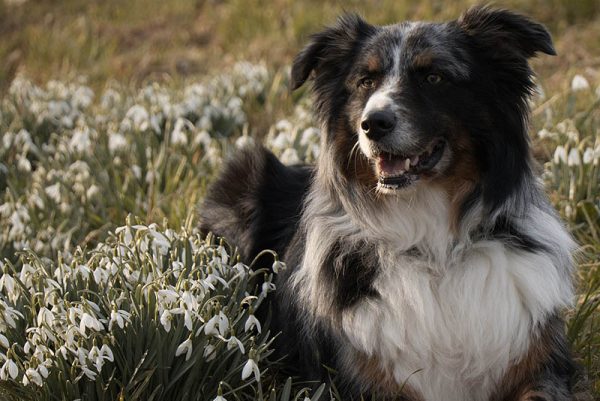Having an intact dog can be a big responsibility. If you have a female dog, you’ll have to track her heat cycles and know when she needs to be kept under lock and key to keep her from an accidental pregnancy. With Australian Shepherds, it can be difficult to keep them contained or on a leash throughout their heat cycle so you can keep your dog safe and free from unwanted or accidental pregnancy.
One of the top reasons that people don’t know their dog is in heat is that they aren’t always aware of the outward signs, so it’s important to know how to keep track. Generally speaking, you can expect your Aussie to experience her first heat cycle around 6 months of age, but some may be as old as 9 months or more before this happens.1 Here’s everything you need to know about your dog’s heat cycle.
When Do Aussies Start Having Heat Cycles?
Although your Aussie will likely continue growing well into their first year of life, she will reach sexual maturity before she stops growing. Once your dog has reached sexual maturity, she will experience heat cycles and can become pregnant. It is common for medium sized dog breeds to come into season around 6 months of age.
For some female Aussies, there may not be any outward signs of the heat cycle, a “silent” heat cycle. This is especially common in young dogs but can continue into adulthood. Once your dog has reached 6 months of age, you should begin carefully monitoring for any changes that may indicate that her heat cycle has begun. If she has reached a year of age with no sign of a heat cycle then book an appointment to discuss this with your veterinarian.
How Do I Know That My Dog Is in Heat?

There are four stages to a full heat cycle in a female dog. These are proestrus, estrus, diestrus and anestrus.
A heat cycle will start with proestrus which commonly lasts around 7 to 10 days. During this time you will usually see a bloody vaginal discharge coupled with swelling of your dog’s vulva, the external part of the female genital tract. Sometimes, these changes will be accompanied by a reddening of the area as well. Due to the altered feeling of these physiologic changes, your Aussie may begin licking the area regularly. In some instances, your dog may need to urinate more frequently throughout her heat cycle.
You may also notice behavioral changes in your dog. She may be more outgoing, loving, and playful, or the opposite, a bit withdrawn and seemingly sad. During proestrus females will attract males but will not allow mounting.
The next phase is estrus, alternative names being: on heat, in season or standing heat. This is when she is at her most fertile and will allow mating. The bloody vaginal discharge will lessen and change to a straw-coloured fluid. Estrus usually lasts around 5 to 10 days.
You need to keep your female out of public areas and under control at all times during both proestrus and estrus, potentially as long as 3 full weeks to avoid pregnancy.
After this time she will enter diestrus which is a time when she is either pregnant (around 64 days) or in a resting phase. False pregnancy can occur during this time as well. The length of diestrus varies greatly- 10 to 140 days. Culminating in progression to anestrus which is the resting time until the cycle starts again.
Abnormal Symptoms During a Heat Cycle
Pyometra, or an infection of the uterus, is a very real risk for intact female dogs. Pyometra can lead to sepsis and death if left untreated, so it’s extremely important to watch for the signs and get your Aussie to the vet at the first signs of pyometra. Sometimes, this condition can be treated medically, but in most cases, removal of the uterus, or a spay, is necessary.
Your dog may show behavioral changes during her heat cycle but she should not seem unwell.
If your dog’s vaginal discharge becomes thick, pus-like, green in color, or develops a foul smell, then she needs to be seen by a veterinarian immediately. Pyometra may be accompanied by an increase in thirst, decrease in appetite, fever, abdominal distention, and lethargy.
An intact female dog can experience a pyometra at any time, but she is most at risk for the 2–8-week period after her heat cycle. The best prevention of pyometra is to have your dog spayed.
How Often Do Heat Cycles Occur?

For young dogs, you can expect a heat cycle to occur every 6 months. The time between heat cycles may lengthen in older dogs. However, it’s important to understand that your dog can become pregnant at almost any age, even if you think she is too old to become pregnant. They do not go through menopause. While there are always risks associated with pregnancy, very young and older dogs are most likely to experience serious complications.
When Should I Have My Dog Spayed?
If you’re on the fence about having your dog spayed, you will need to talk to your vet and weigh the pros and cons of your options. It requires a serious commitment to your dog’s health and well-being to keep your dog intact, and a fund to treat a potential pyometra should always be on hand with an intact female dog.
There are some differences in advice surrounding the appropriate time to have your dog spayed. Most vets recommend having your dog spayed around 6 months of age prior to her first heat cycle. Spaying this early can significantly reduce your dog’s chance of developing mammary cancer later in life, as well as reducing the risk of ovarian cancer and pyometra to zero.
Some people feel that it is best to wait until a dog is fully grown and has closed growth plates before spaying. In Aussies, this typically occurs around 12 months. Talk to your vet about your options.
Summing Up
Having an Aussie that is intact is a huge responsibility, but monitoring your dog’s heat cycles can help you be a better owner for them. Knowing when your dog is expected to have a heat cycle or when she is in heat can help you protect her from unwanted pregnancies.
Knowing abnormal heat symptoms that can indicate pyometra is one of the best ways you can protect your dog’s health and longevity.
Make sure to discuss the pros and cons of spaying and at what age with your vet.
Featured Image Credit: Topthor, Pixabay











